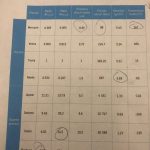
Project Gallery 2023
Secondary students from across Europe became exoplanet detectives with ESA and used Cheops satellite data to uncover the mysteries of two exoplanet targets: KELT-3b and TOI-560c.
Explore the projects below.
Salsa Choque
Gimnasio Vermont Bogotá D.C – Cundinamarca Colombia 17 years old 3 / 0
TOI-560c
TOI-560c project description:
This activity consists of getting information on an exoplanet (TOI-560c) using only the light curve that it generated during transit, its mass, the radius of the star that it orbits, and the mass of the star that it orbits. The data in the light curve was obtained by the TESS probe in 2021 and a lot of the data from the planet was obtained using a program (Jupyter Notebook). The features used to analyze the exoplanet and compare it to the planets in our solar system are radius, mass, mean orbital distance, orbital period, density, and temperature.
TOI-560c Results and Analysis
The first anomaly perceived is the difference between the Radius of the planet used for realizing de Transit Light Curve of TOI-560c observed in Image 1 (3.17𝑅𝐸𝑎𝑟𝑡ℎ). and the same feature calculated by Jupyter Notebook seen in Image 2 (2.39𝑅𝐸𝑎𝑟𝑡ℎ). This occurs since the application used creates
an estimated value of the exoplanet’s radius by searching for the best model that better adjusts with the data points, creating the Final results of our investigation line seen in Image 1.
Moreover, there were found approximate similarities regarding the features belonging to the planets in our solar system seen in Image 3. Mercury is the planet that most adjusts to the mean orbital distance, period, and mean temperature of the studied exoplanet. Meanwhile, the exoplanet has a similar density to the planet Mars and a similar mass to Uranus. Finally, Neptune has the closest radius regarding exoplanet.
Considering the density of the exoplanet, it is possible to infer that it will be composed of high-density materials, such as metal or rock. Furthermore, it can be said that the planet does not orbit its star in the habitable zone since while analyzing its temperature it is too high to maintain water in a liquid state, so it is inferred that it is too close to the planet.
TOI-560c Conclusions
After analyzing the results, it is possible to conclude that:
This exoplanet is not habitable.
This exoplanet is more likely to be a rocky planet than a gaseous one.
When comparing TOI-560c with Milky Way’s planets, it is possible to conclude that it shares more similarities with Rocky planets such as Mercury, Venus, Earth, and Mars, than Gaseous planets such as Jupiter, Saturn, Uranus, and Neptune.
Supporting files:




